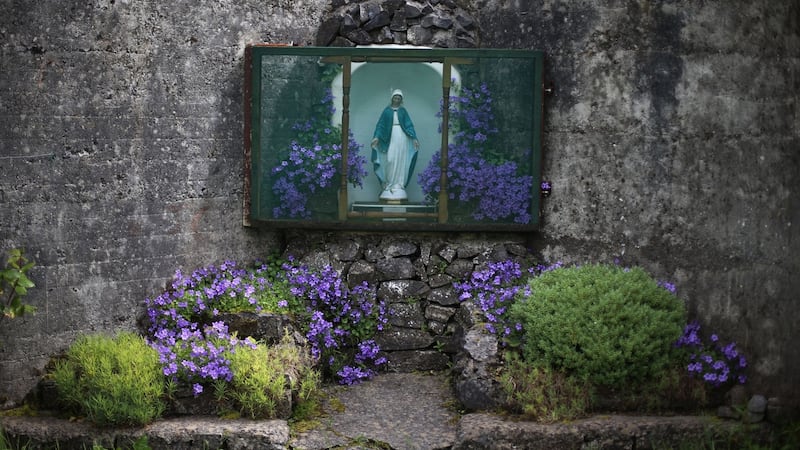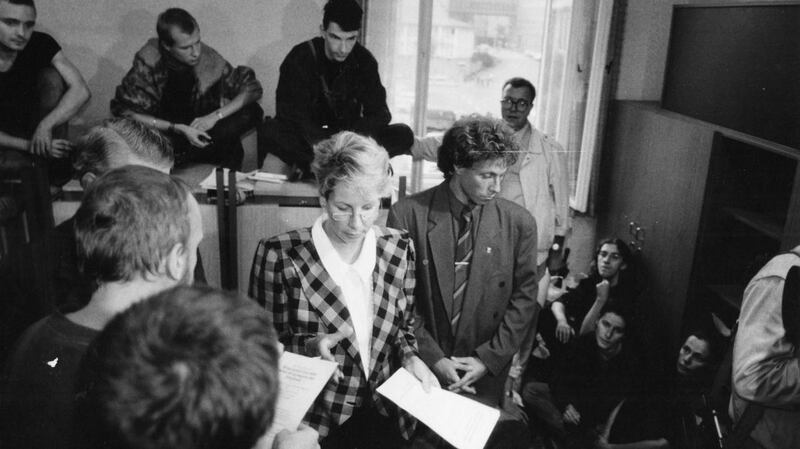Three decades after it vanished, East Germany’s secret police, the ministry for state security (or Stasi), has become a global brand. From Oscar-winning films to cult podcasts, people cannot get enough of the communist agents and their army of informers who spied on their fellow East Germans for nearly 40 years.
Weeks after the Berlin Wall fell, civil rights campaigners zeroed in on the Stasi, storming its headquarters in January 1990 to halt the mass destruction of files. Skip forward a year and the united Germany took an unprecedented move: it threw open to the public the Stasi archive, files occupying around 111km of shelf space.
Among the 7.4 million access requests since then, 3.5 million ordinary Germans have seen the file held on them. They have learned how their lives were influenced – or destroyed – by the paranoid East German state and its willing helpers – sometimes within their own families. Many others have been exposed as informers, while the largest group of Germans, east and west, have decided not to look for their file. But most are happy they had the option.


Today this open approach to the Stasi archive is held up as a triumph of historical responsibility, a model of how a mature country should face up to its troubled past. But few remember how close Germany came to a very different outcome.
Back in the hectic months between the fall of the wall on November 9th 1989, and German unification on October 3rd, 1990, influential politicians east and west pushed to seal the archive.
How they were forced to change their minds offers important lessons for other countries unsure how to tackle their problematic pasts. Countries such as Ireland.
* * * *
Eight months ago the final report into mother and baby homes triggered a fresh round of debate over access to records held on former residents and survivors of residential institutions operated by religious orders. In June a second wave followed Catriona Crowe’s essay in the Dublin Review, castigating the inquiry’s procedures, methodology and approach to survivors.
As some demand the withdrawal of the mother and baby report conclusions, the Government has published a bill allowing people adopted at birth – often illegally – access birth certificates and other early life information. While this will help many people answer questions about their past, large swathes of Catholic Ireland’s historical canvas remain blank.
Religious orders retain their archives. There is no palpable pressure on them to hand them over, nor is there a dedicated public institution to manage the files if they did. Official Ireland still adopts an ad hoc approach to its past, limiting any chance of coherent research or public education on our vanished Catholic past.
A series of inquiries and reports have cast light into the darkness, prompting some to engage in outbursts of airwave outrage while others favour social media virtue signalling. The vast majority of Irish people, though, remain silent and avert their gaze.
It would be wrong to compare Catholic Ireland and communist East Germany, but Ireland’s approach to its collective past today jars with how East Germans sometimes at real risk to themselves and their families took ownership of the Stasi files and their past. Twice.
* * * *
Eight months after civil rights groups secured the Stasi headquarters and halted file destruction, the files were endangered again. On August 24th, 1990, MPs in East Germany’s first and last democratically-elected Volkskammer parliament voted to allow access to the Stasi files. Though that decision was dropped from the unification treaty, signed a week later.
Senior politicians in Bonn and East Berlin, in a rare moment of agreement, insisted files should be destroyed or, at the very least, locked up behind a 30-year rule. Eastern politicians predicted “murder and manslaughter” if the files were opened, western politicians, citing security concerns, were just as worried about Stasi and KGB kompromat on them becoming public.
With the days ticking down on East Germany, and the future of the Stasi archive on a knife-edge, Frank Ebert decided to take action.
On September 4th, 1990, Ebert and 20 other eastern campaigners strolled into the Stasi complex on East Berlin’s Normannenstrasse and moved quickly to the third floor, where they barricaded themselves inside.
Their occupation, including a hunger strike, generated huge publicity. Newspapers carried images of hand-painted banners fluttering from the windows reading: “The Files are Ours”. Daily press conferences were broadcast live on television. Joining the protest was Wolf Biermann, a political folk singer stripped of his East German citizenship in 1976.
Day by day the campaigners rammed home how German unification was about more than just politics and economics. Some 86 per cent of East Germans, according to an April 1990 poll, believed Stasi victims should have access to their files. Suppressing the files, the Stasi HQ occupiers argued, endangered any chance of social peace in a united Germany.
“You cannot rob people – in particular people who were tormented – of their past . . . it’s a painful but educational part [of their past],” Biermann told East German television. Sealing the files, he said, would be “like taking out a part of our brains”.
The occupiers, with huge public backing, triggered high-stakes negotiations in Bonn that resulted in a last-minute addendum to the unification treaty: a promise to legislate for file access. After 24 days, Frank Ebert and the others went home.
Two months after the two Germanys became one, the united Bundestag passed the Stasi Records Act in December 1990. A new state authority would take charge of the files, on-site in former Stasi archives, overseen by an independent, ombudsman-style custodian.
Crucially the Act places the needs of victims and survivors front and centre. Provision was made to protect third parties, with files redacted where necessary before being released.
After 30 years, with none of the predicted “murder and manslaughter”, responsibility for preserving Stasi files and processing access requests has now shifted to Germany’s federal archive, the Bundesarchiv.
In his parting words Roland Jahn, the third and final Stasi files commissioner, said the open archive had increased Germans’ understanding of repression and their response, from guilt and conformism to moral courage.
“We have done the victims justice,” he said, “and built a bridge to the next generation.”
****
Has Ireland done the same? Some 25 years after Dear Daughter told the stories of Goldenbridge orphanage survivors, with countless exposés since, Catholic Ireland’s archives remain scattered between different church and State institutions with no one clear access regime and philosophy.
The Sisters of Mercy, who ran Goldenbridge and other residential institutions, say their files are managed by a professional archivist and that it has a “well-established process” of allowing personal access to files of former residents and their descendants.
“The matter of greater access to these personal records is a much wider issue, involving many parties and necessary legislation to protect individual files,” the order said in a statement.
Though religious orders’ archives date back to the 19th century and beyond, they are all subject to GDPR, the European Union data-protection regime from 2018. It puts so-called data subjects – in this case a former home resident – in charge of data held on them. The data controller may hold the physical file but is obliged to provide access even if the controller is a religious order in Ireland.
“There is no general exemption from the GDPR for such bodies,” said a spokeswoman for the Data Protection Commisioner, with limited restrictions only allowed on a case-by-case basis. “If an organisation continues to hold personal data, then GDPR will apply.”
The commissioner declines to say how many – if any – access requests it has received, or has processed, involving religious orders.
Dublin solicitor Gerard Rudden, involved in long-running Facebook data-protection cases, says "it is surprising that no DPC decision has been made requiring the religious orders to comply with GDPR on foot of a complaint".
Rather than individual access requests, Catriona Crowe argues that records held privately by religious orders belong in public archives as they "effectively operated as an arm of the State".
Order files handed over to the mother and baby inquiry are now with Tusla, the child-protection and welfare body. Crowe argues that the file scans – and ideally the originals – should be transferred to a new body with staff trained in working with often fragile historical records.
“There is nothing difficult about transferring the mother and baby archive plus back-up tapes of survivor interviews to a new archive where redaction can be done easily on files as needed,” she said. So why doesn’t that happen? Why is post-Catholic Ireland in 2021 less progressive than communist East Germany in its dying days?
“There are levels of complicity on the part of the [Irish] population in some of these atrocities and nobody wants to really know about it,” Crowe says. “There will always be good campaigners in this field but, unless this is a good story about them, the general population is not going to get behind this.”








